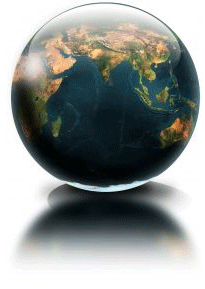The TEIN3 Project
 Following the success of its predecessor, TEIN3 extended the project until 2011. TEIN3 aimed to:
Following the success of its predecessor, TEIN3 extended the project until 2011. TEIN3 aimed to:
- Increase Internet connectivity for research and education between Europe and Asia via high-speed direct links to GÉANT.
- Improve intra-regional connectivity across Asia with upgraded link capacities.
- Expand geographical coverage of the network to include other Asian countries.
- Support and promote collaborative network applications.
- Act as a catalyst for the development of national research networking in the developing countries in the Asia-Pacific region.
- Transfer project management to Asian ownership.
- Develop funding models for long-term sustainability.
- Pave the way for TEIN4.
Funding
Building on the success of TEIN2, at the end of 2007 the European Commission announced a new financial package for the seamless continuation of the network beyond 2008. The EC contributed €12m towards the cost of TEIN3. Further substantial funding and link capacity were provided by the Asian partners. In September 2012, responsibility for the new phase, TEIN4, has been transferred to the TEIN* Cooperation Center (TEIN*CC), which has been established by the Korean government to continue to develop the network up to 2016 with DANTE support. TEIN continues to receive funding support from the European Commission which is contributing 8M € for TEIN4.
In September 2012, responsibility for the new phase, TEIN4, has been transferred to the TEIN* Cooperation Center (TEIN*CC), which has been established by the Korean government to continue to develop the network up to 2016 with DANTE support. TEIN continues to receive funding support from the European Commission which is contributing 8M € for TEIN4.
Geographical expansion
Following a highly successful tender process, TEIN3 entered service in 2009. It built on the achievements of the TEIN2 network which already connected China, Indonesia, Japan, Korea, Laos, Malaysia, the Philippines, Singapore, Thailand, Vietnam and Australia. Subsequently, the network was extended into the South Asian sub-region and other interested Asian countries, such as Cambodia.
A continuing ASEM success story
The Asia-Europe Meeting (ASEM) was established in 1996 as an informal Euro-Asia co-operatio n forum.
n forum.
Membership currently comprises 49 countries (Australia, Austria, Bangladesh, Belgium, Brunei, Bulgaria, Cambodia, China, Cyprus, Czech Republic, Denmark, Estonia, Finland, France, Germany, Greece, Hungary, India, Indonesia, Ireland, Italy, Japan, Republic of Korea, Laos, Latvia, Lithuania, Luxembourg, Malaysia, Malta, Mongolia, Myanmar, the Netherlands, New Zealand, Norway, Pakistan, the Philippines, Poland, Portugal, Romania, Russia, Singapore, Slovakia, Slovenia, Spain, Sweden, Switzerland, Thailand, the United Kingdom and Vietnam), as well as the European Commission and the Association of Southeast Asian Nations (ASEAN) Secretariat .
ASEM holds biennial Summit meetings at the level of heads of state and government.
The Trans-Eurasia Information Network (TEIN) initiative was launched at the ASEM 3 Summit in Seoul in 2000 to improve Euro-Asian research networking. The first result was the installation of a France-Korea connection (TEIN1) in 2001 which was upgraded several times in the following years to meet the increasing demands from users. ASEM 6 in Helsinki in September 2006 marked the official inauguration of TEIN2, which extended the bilateral success of TEIN1 to the regional level by creating the first large-scale regional data-communications network for research and education across the Asia-Pacific region.
In October 2008, leaders at ASEM 7 in Beijing recognised the success  of the TEIN initiative in fostering research collaboration between ASEM partners, announced the launch of the TEIN3 network and renewed their commitment to its long-term sustainability (see article 38 of ASEM7 Chair’s Statement).
of the TEIN initiative in fostering research collaboration between ASEM partners, announced the launch of the TEIN3 network and renewed their commitment to its long-term sustainability (see article 38 of ASEM7 Chair’s Statement).
Another milestone was achieved at the end of 2009, when the network was extended to South Asia, thus bringing the Asian community further together. This achievement was celebrated at the ASEM Workshop 'Building an Inclusive Information Society' held 1-2 December in Kuala Lumpur. 
In November 2012, leaders at ASEM 9 in Vientiane, Laos, recognized the establishment of TEIN*CC and renewed their endorsement for the TEIN initiative.


